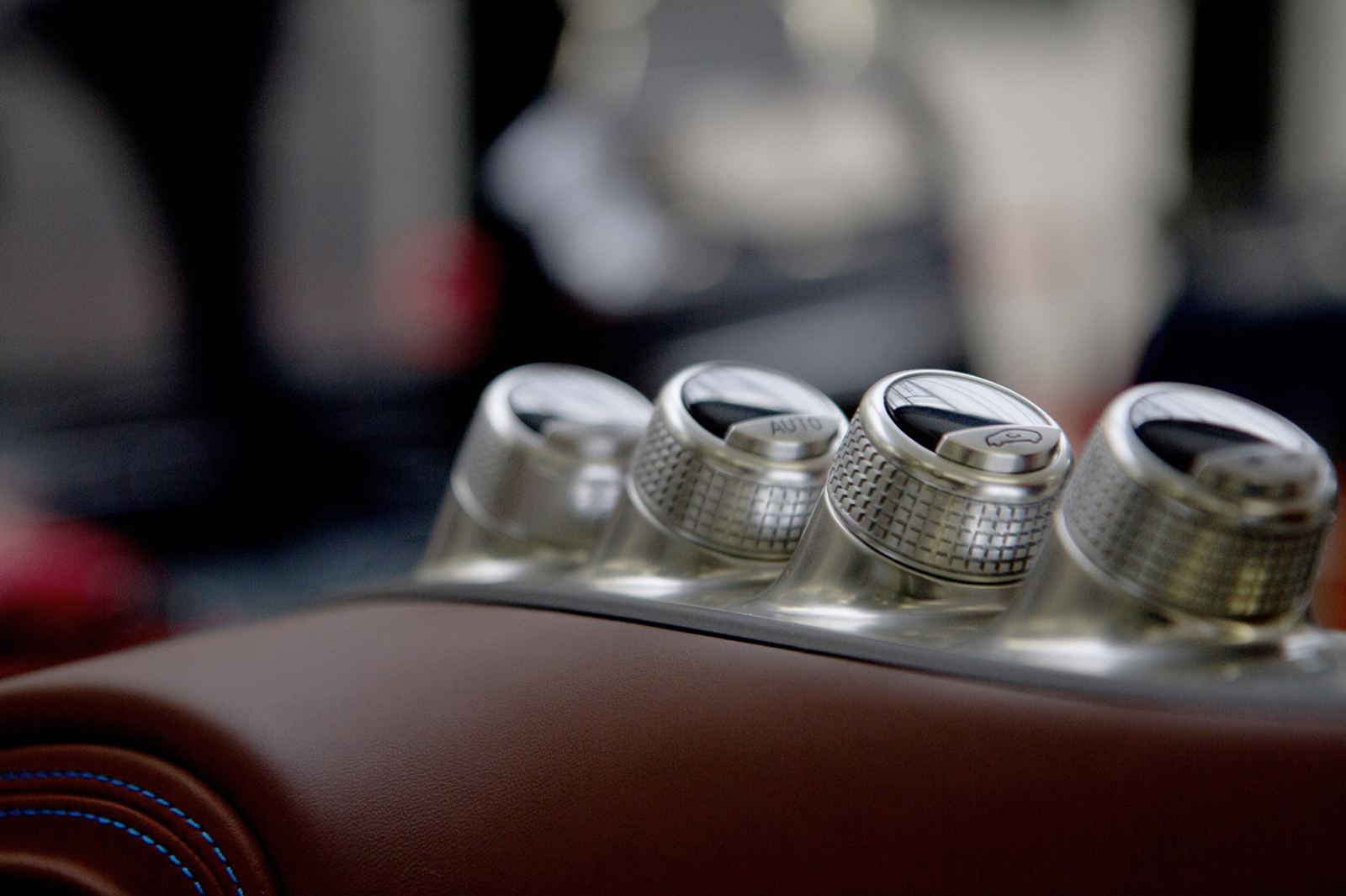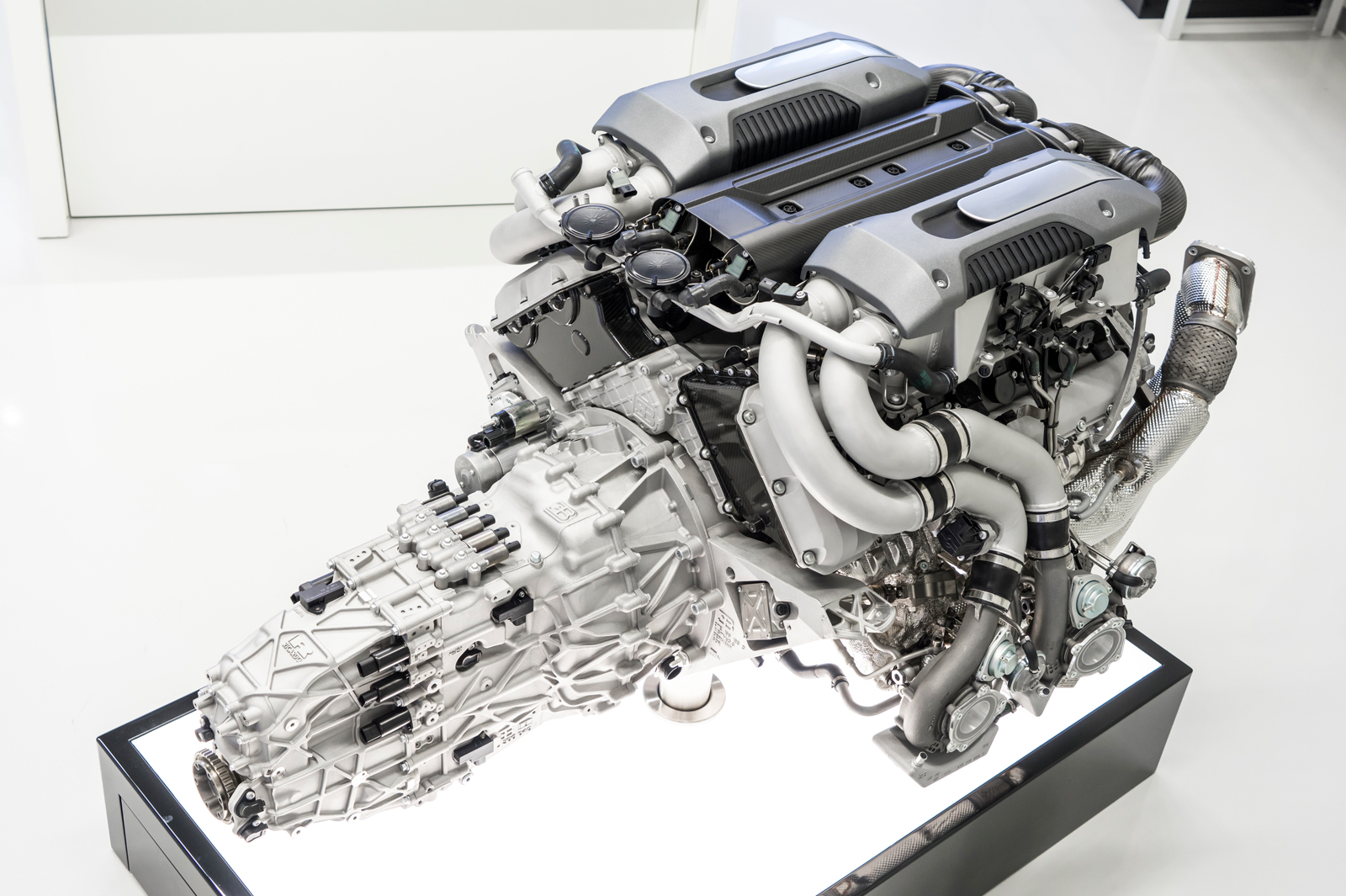Behind the Design of the Bugatti Chiron
This beastly supercar is poised to break speed records

“The Veyron was really near to the limit of what could be done,” says board member and Bugatti’s technical development head, Dr. Willi Netuschil, referring to the very car that propelled the brand back to the world of the ultra-elite. That car counted on a massive 16.4-cylinder engine, with four turbochargers on tap to help it create 1,000 horsepower and break speed records. The model line would later include a Grand Sport version that cranked an unheard of 1,200 hp. The Chiron, unveiled earlier this year, is the first redesign since the brand’s revival and, of course, pushed the limits of power even further.

“When we started this project, we would write ‘+25%’ on each page we sketched, to keep the directive in mind,” says Frank Heyl, head of exterior design production development for Chiron. Heyl is referring to the 25% more of everything the Chiron is meant to be over its predecessor, which is perhaps most evident in its 1,500 hp versus the Veyron’s final 1,200 hp. Some 25% more for a car that was already pushing the physical limits of thermal engineering presented a grandiose challenge. Bugatti’s director of design, Achim Anscheidt, says that was the biggest difference in approaching Chiron versus its predecessor. “With Chiron, we couldn’t just design the car and throw it over to engineering and make the 1,000hp car happen,” he tells us.
We’re walking through Bugatti’s assembly plant, just one part of the manufacturer’s French estate in Molsheim, in the country’s characteristic Alsace region. While it may seem convenient that this French brand is in the most German part of France—parent Volkswagen is German and based in Wolfsburg—it’s always been that way. Ettore Bugatti’s family was well-heeled in the art world a century ago, and the Bugattis emigrated from Italy to be closer to the epicenter of art at the time, Paris.

Bugatti made his name on the podium winning races with cars he created in the ’20s, but also by building them for wealthy clients who fancied motorsport at a time when you had to be fancy—and very well off—to be involved in racing. The cars weren’t cheap, but they earned a reputation as winners as well. Bugatti, with a little dramatic Italian flair, also looked to revolutionize the sport, which was just in its infancy at the time.
He didn’t like the fact that tools and parts were splayed all over the field and open pits, and mechanics had to work on cars in the hot sun. He was fundamental to bringing a sense of hospitality and order to motorsports, with covered tents and a proper storage shop for tools, but also for the patrons attending, who would be well looked after while appreciating the new spectacle. If he didn’t like the tooling or benches available, he would even create his own, down to making his own leather racing gloves. His son Jean continued the tradition in the ’30s and up until World War II, hosting guests and clients for memorable dinners in the chateau that also sits on the 40 acre property. But the brand was largely forgotten until Volkswagen revived the nameplate in the ’90s. The revival, however, took full force in the mid-2000s with the Bugatti Veyron.

For its newest project, the Bugatti design and engineering teams had to work much more closely together. Often in joint meetings, designers would carry sketchpads, and brainstorm how to target specific areas to meet both aesthetic and technical needs on the fly. That kind of instant feedback and communication is rare in traditional automotive design. One such area was right behind the B-pillar, just above where the door ends.
“This is an extremely high-pressure zone, so early on, we just realized we needed to open it up,” says Sasha Selipanov, co-head of exterior design. “This is how we developed the large air intake, that also highlights the Bugatti signature line.” Interestingly, through a series of aerodynamic and wind-tunnel tests, the team learned the Chiron was actually more efficient at dealing with the pressure with a more narrow—closer to the body—intake than a larger, wider one. The new air intake gives Chiron a much more distinctive profile, too.

Selipanov actually came from Volkswagen’s Potsdam design center and won a contest to lead the direction of how the Chiron would look. Design director Anscheidt says when it came time think about designing the new car, he wanted to get fresh, outside perspectives in. “I went up to the head of the VW Group at the time, Walter de’Silva, and asked for an ideation of design ideas, 30-40 designers competing.” Anscheidt says he singled in on Selipanov’s sketches, and brought him on board to help lead and shape the exterior aesthetic.
We kept hearing that they wanted it to be more aggressive, and they favored a more beastly looking design
For his part, Selipanov says the idea was to take Veyron and “make it more beastly.” Anscheidt says that’s what customers wanted, too. “When we talked to Veyron owners and those that would be interested in the Chiron, what we kept hearing was that they wanted it to be more aggressive, and they favored a more beastly looking design.” Small tweaks positively affect performance, too. The improved front-splitter geometry, for example, improves downforce while adding little drag, a winning formula for any budding land-rocket.

But that philosophy doesn’t necessarily extend to the interior, where luxury, simplicity, and elegance are the objectives. Despite its savage grunt, as Anscheidt points out, “We’re the ultimate GT car. If you’re in a P1,” referring to McLaren‘s much lauded supercar, “everything is pure carbon fiber, you really feel as if you’re in a race car. In Chiron, you can roll around as if you were in a Golf GTI, but the instant you want it, you have a brutal amount of power.”
Details on the inside are thoughtfully considered. As Etienne Salomé, head of interior design for Bugatti, points out: all of the instruments and controls are exactly in the center of the cockpit. The dials are made of solid aluminum, because “this is a car that must be passed down.”

One of the most telling details is on the analogue digital speedometer. It displays kilometers per hour, and it’s the only car to have a “500” imprinted. The car is legally approved for 420 kilometers per hour on the road, or 261 mph. The car can go faster too; Bugatti will electronically unlock that extra speed to do its world record testing in 2018. While we won’t know exactly until then, it’s believed the Chiron can top out another 25 mph faster—or so the rumor goes. “The thing to remember is just how much more stopping distance you need at those speeds,” head of engineering Dr Netuschil says. That limits the number of places on earth you can achieve such a feat to just a few. One is Volkswagen’s own track, near Wolfsburg, that boasts an unusually long straight, specially designed for high speed stunts. “There is also a military airport that we can arrange to test on, the runway is long enough,” Bugatti’s technical head adds.

It’s accessing that final stretch of power that will require the massive 16.4-liter mill, and its four turbochargers—developed to work in two-stages, each is 69% larger than on Veyron—to push supernatural speeds, certainly in its seventh and final gear en route to topping out. The new engine requires a mind-bending 60,000 liters of cooling per minute at that maximum output, the equivalent a human breathes in five days.

In the world of ultra-fast, super and sports cars, the Bugatti Chiron represents the pinnacle of hyper. Bugatti says it is primed to break a new world speed record, and with new advancements in aerodynamics, cooling, and a more complex engine all working in combination to achieve that, it just may do that. In the meantime, customers will receive the first deliveries later this year.
Images courtesy of Bugatti












